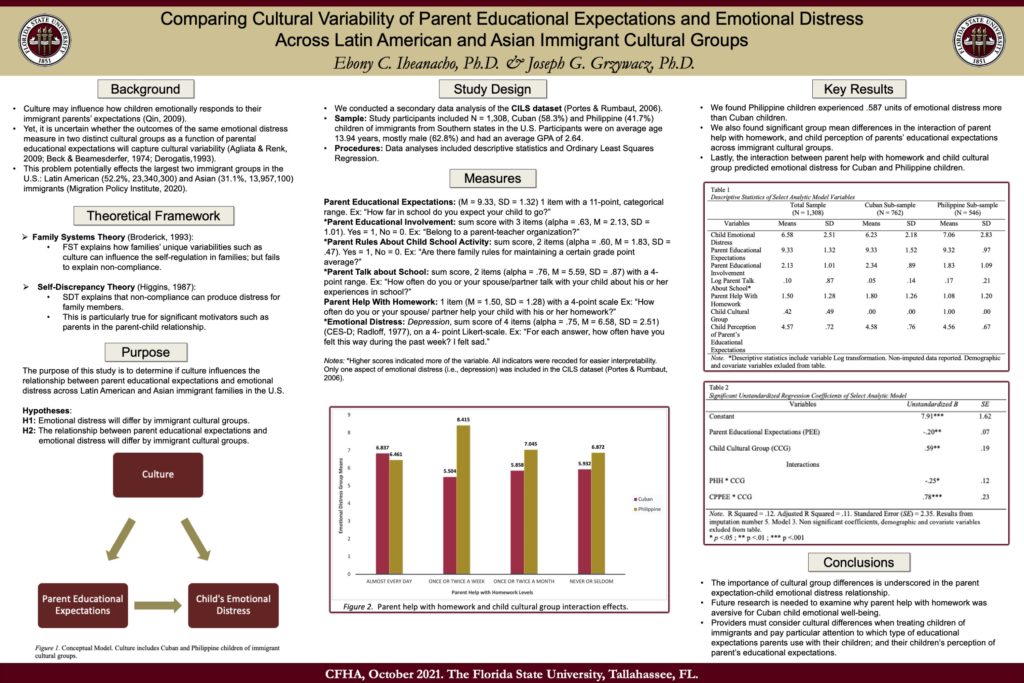Background/ Rationale: Culture may influence how the child emotionally responds to their immigrant parents’ expectations (Aldwin & Greenberger, 1987; Qin, 2009). Unfortunately, it is uncertain whether these common measures for parent educational expectations and emotional distress can capture cultural variability across immigrant groups. This problem potentially effects 44.4 million (13.7%) foreign-born individuals residing in the United States (U.S.; Batalova, Blizzard, & Bolter, 2018). Therefore, the purpose of this study was to determine if culture influences parent educational expectations and child emotional distress across Latin American and Asian immigrant families in the U.S. Theory & Study Design: Theoretically supported by the Family systems theory (Broderick, 1993) and self- discrepancy theory (Higgins, 1987), we conducted a secondary data analysis of the CILS dataset (Portes & Rumbaut, 2006). Sample: Study participants included N = 1,308, Cuban (58.3%) and Philippine (41.7%) children of immigrants from Southern states in the U.S. Participants were on average age 13.94 years, mostly male (62.8%) and had an average GPA of 2.64. Procedures: Data analyses included descriptive statistics and Ordinary Least Squares Regression. Key Results: We found Philippine children experienced .587 units of emotional distress more than Cuban children. We also found significant group mean differences in the interaction of parent help with homework, and child perception of parents’ educational expectations across immigrant cultural groups. Lastly, the interaction between parent help with homework and child cultural group predicted emotional distress for Cuban and Philippine children.
Integrated Care Conference | October 16th - 18th | Raleigh, North Carolina


Leave a Reply